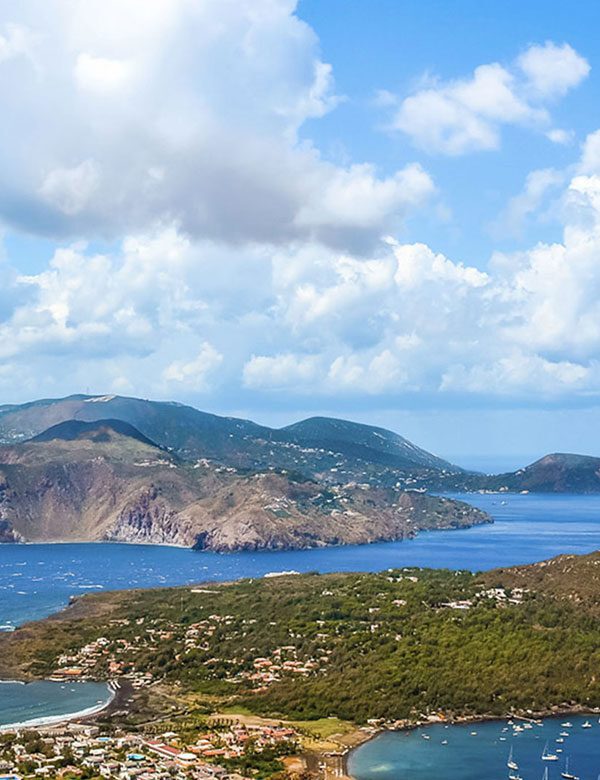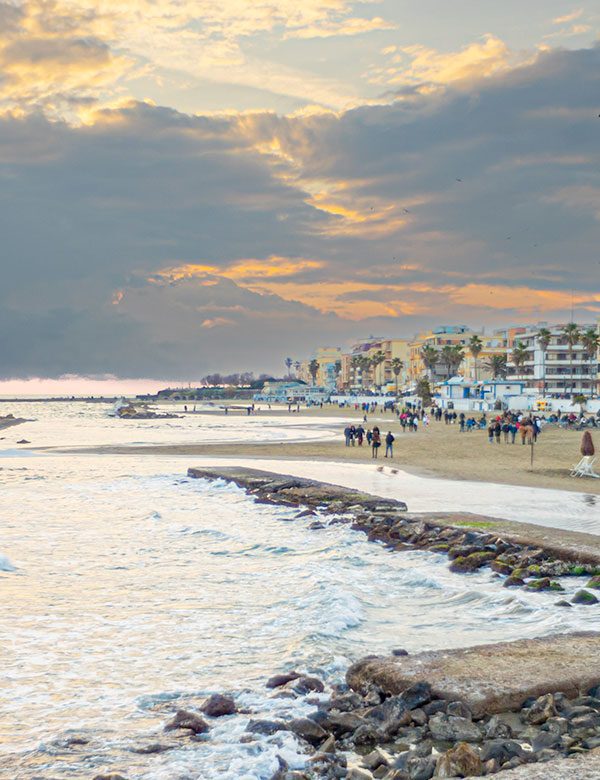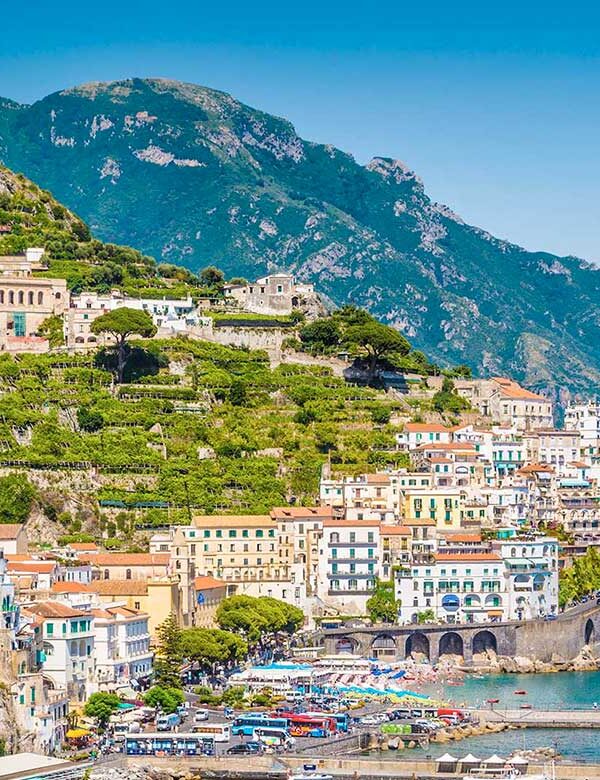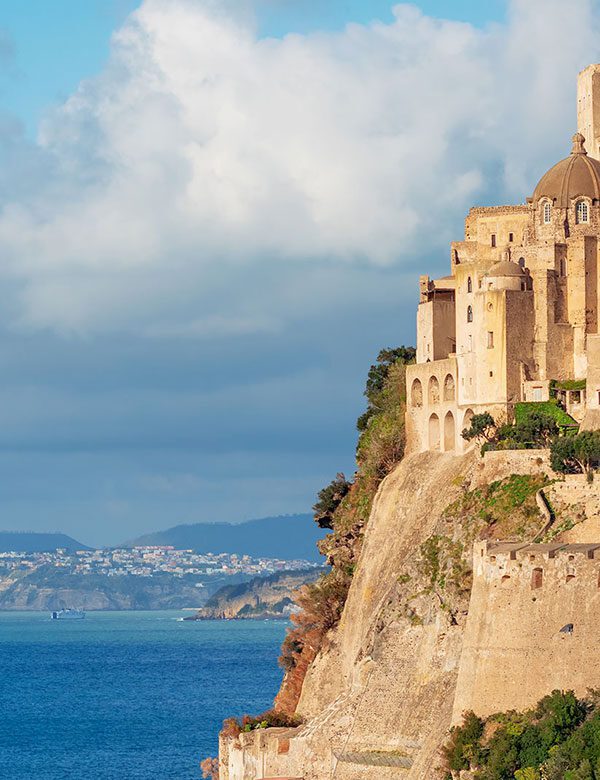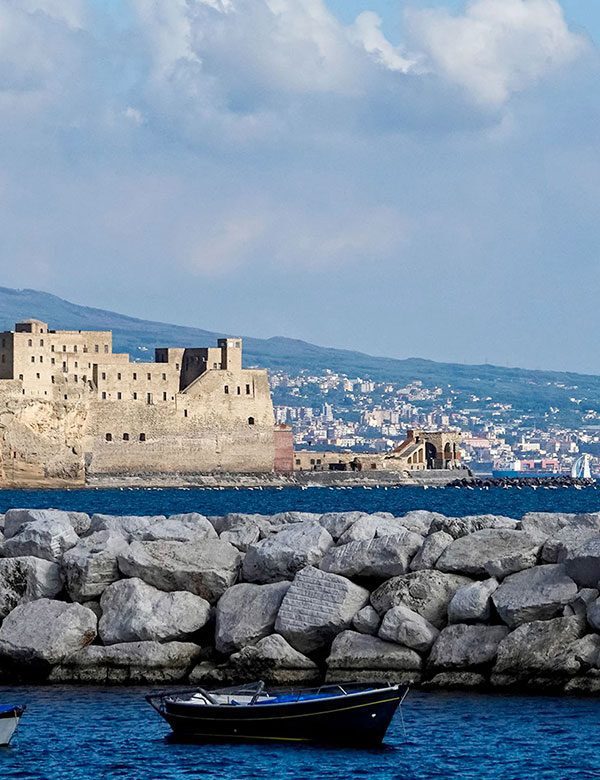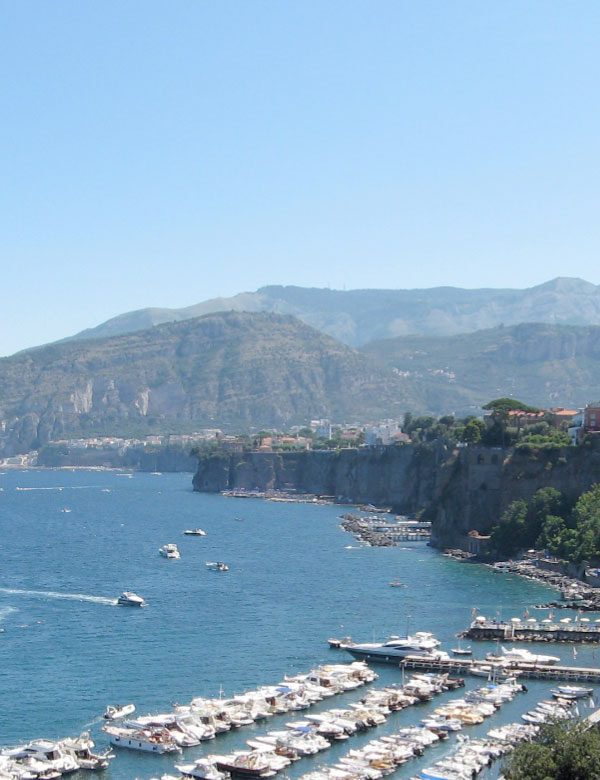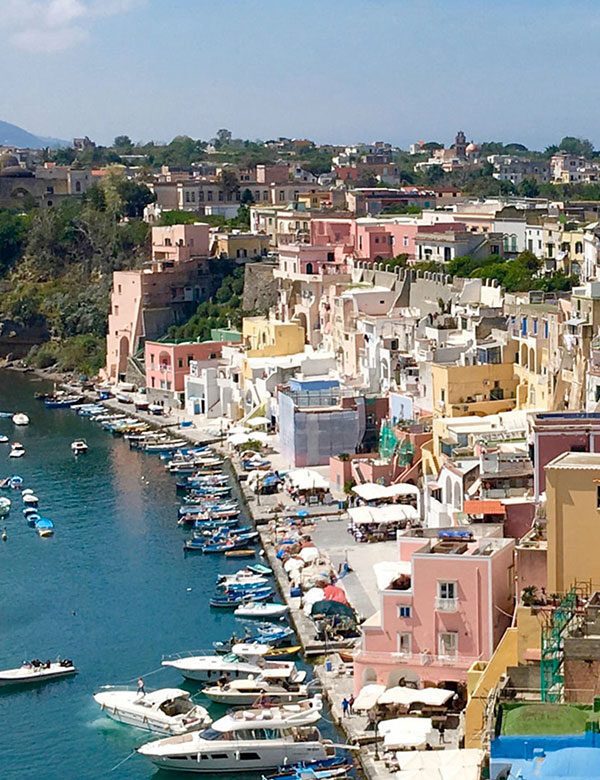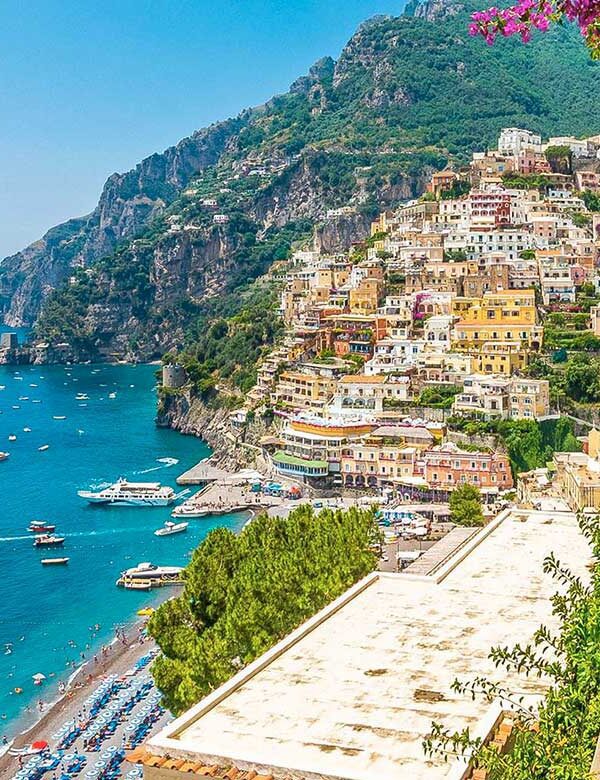Costa del Vesuvio
Torre del Greco - Torre Annunziata - Castellammare di Stabia
Stunning and familiar, the silhouette of the world's most famous volcano dominates the landscape on land and from the sea. Over the millennia, the Somma-Vesuvius volcanic complex has modelled all the elements of a vast territory south of Naples, appreciated since ancient times for the fertility of its soils, the salubriousness of its climate and the harmonious beauty of its coastline, fertile with myths and legends.
The Great Cone, which has been identified with Vesuvius for almost two thousand years, had not yet formed when the wealthy Romans began to favour that coastal stretch of the gulf between Naples and Sorrento for their seaside villas, where they loved to spend periods of leisure, while in the more inland areas agricultural activities were flourishing and excellent oil and renowned wine
were produced. This was an ideal balance until the abrupt break in continuity caused by the
eruption of 79 AD, which changed the face of the volcano and the entire surrounding area, burying the great city of Pompeii and all its suburbs and satellite centres.
They gradually came back to light in the 18th century, when the first discoveries of the settlements of Pompeii, Herculaneum, Stabia and Oplonti, today's Torre Annunziata, restored great fame to that stretch of coastline, attracting Grand Tour travellers from all over Europe. And also the nobles of the Bourbon court who, after the construction of the palace of Portici favoured by King Charles, competed to build splendid villas along what became known as the Golden Mile, between Herculaneum and Torre del Greco.
Meanwhile, in spite of Vesuvius' periodic rages, coastal settlements and those on the slopes of the volcano had been rebuilt and consolidated since the Middle Ages. Many villages, close to the archaeological sites of the oldest centres, that over time were characterised by new peculiarities, traditions and attractions - historical, artistic, religious, landscape - all waiting to be discovered. Starting with Castellammare di Stabia, from which one can take a cable car up to the summit of Monte Faito, to enjoy a unique panorama of the Gulf of Naples and the Monti Lattari. And then the Quisisana palace immersed in the woods, with its museum housing the remains of ancient Stabia. Also worth a visit is the hamlet of Pozzano with its castle and Marian sanctuary. In Herculaneum, in addition to the archaeological area and the nearby Mav museum, you can visit the splendid Villa Campolieto, the most famous of the Vesuvian villas in the Miglio d'Oro (Golden Mile), which offers a rich programme of cultural initiatives. In Torre Annunziata, the ancient Oplontis, the remains of the great villa of Poppea, Nero's second wife, have come to light. While Torre del Greco has been world-famous for centuries for its coral work and cameos. A visit to the extraordinary collections of coral art objects in the Liverino Museum and the museum set up at the historic State Institute of Art, where the new generations of coral artists are trained, is not to be missed. A visit to the Vesuvian area, however, cannot leave Pompeii out of consideration. Because of the absolute and unparalleled value of the ancient city, which continues to provide astonishing evidence of the daily life that took place there before the eruption of Vesuvius. And for the presence of the Marian Sanctuary, one of the largest and most famous in Italy. To crown the discovery of the Vesuvius area, there are fascinating excursions to the most evocative and representative places of the geological history and great biological, botanical and faunal diversity of the Somma-Vesuvius complex, protected and enhanced by the Vesuvius National Park.
 Hello Alilauro 0814972238
Hello Alilauro 0814972238 








